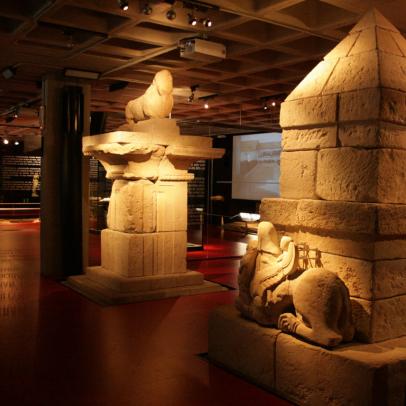The MAHE, which is situated in the town’s city centre, is a very interesting museum. It revolves around two main areas of interest: archeology and history.
The section devoted to the archeological collection contains vestiges that testify to the town’s rich history, including remains from Neolithic settlements to Late Antiquity. The most important samples have been recovered from the ancient site of “La Alcudia”, where the old town used to be situated.
The section devoted to history is situated in the palace of the feudal lord, built on the old Muslim defensive system. The fortress, which is closely connected with the town’s history, includes museum objects linked to Elche’s history, from its establishment to the 10th century.
This museum of the history of Elche provides a good excuse to examine the relation between El Cid and this town, which the poem describes as a story of sorrow and big challenges. It all started in November 1088. King Alfonso VI asked El Cid, who was camping at a place close to Ontinyent, for assistance to attack an army of Almoravids and the taifa kingdom, whose ruler had seized the fortress of Aledo (Murcia), which at that time had been conquered by a group of Castilian warriors. Alfonso’s troops and El Cid were scheduled to meet up in the region of Villena, but the two armies failed, for unknown reasons, to do so.
El Cid, who had remained at Ontinyent, went to Elche, where he set up a camp. In Elche it reached El Cid’s ears that the king Alfonso, in rage for not having received any assistance, accused Rodrigo of being a traitor. This was the greatest disgrace to a knight. Moreover, the king took all his possessions and threw him into a second exile.
El Cid spent Christmas (1088) in Elche in this precarious situation. It was then that he decided that he would be at the service of no lord and that he would act on his own. He conquered Valencia six years later.
Rev. PAB 27.12.18





